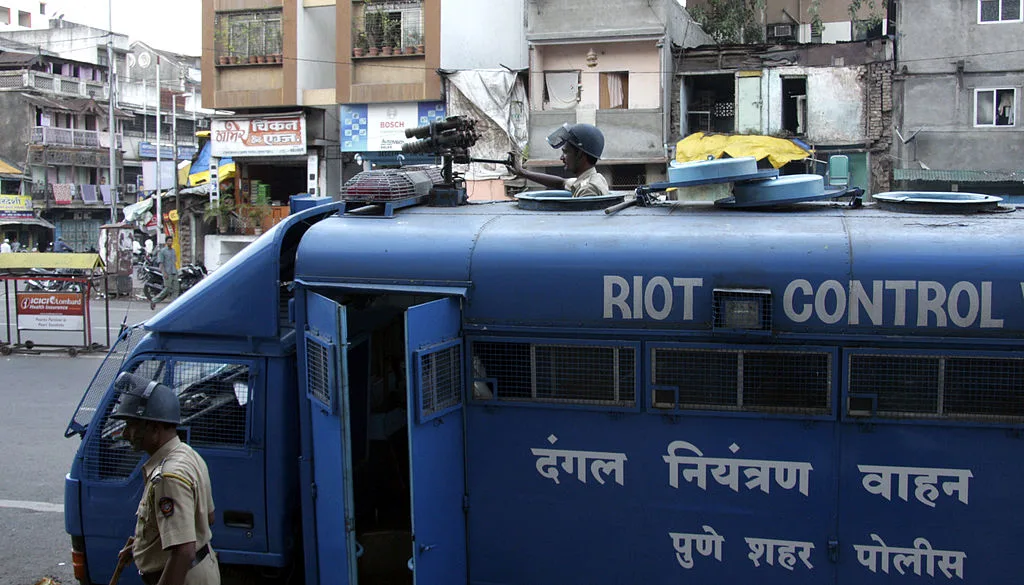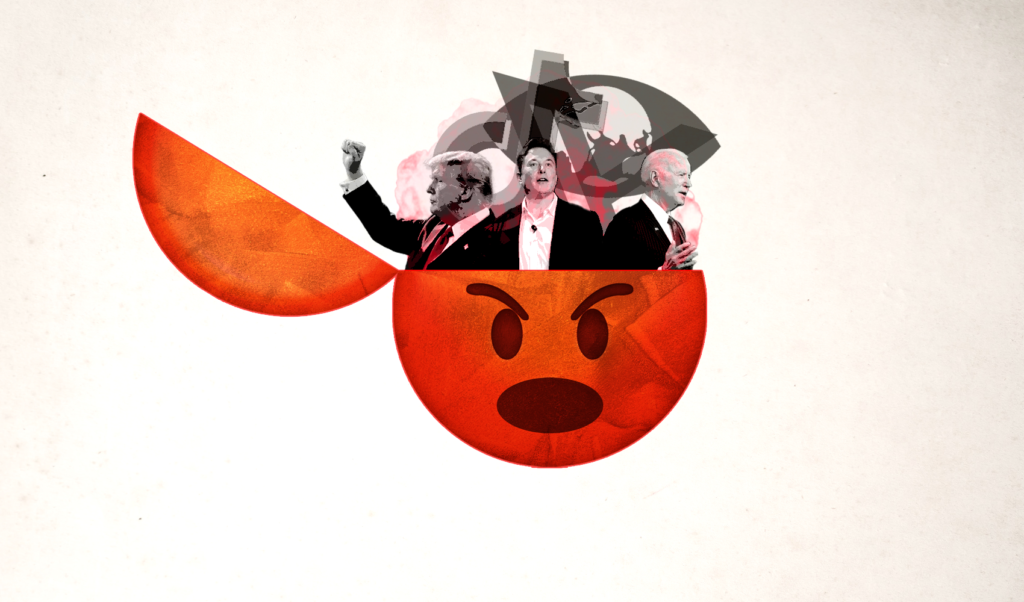As we muddle through the complexities of the 21st century, progress appears to be stifled by a media keen on angering its audience, rather than informing them.
 A form of “anger-tainment” has become a staple in Australia’s media landscape. : Roman Kraft for Unsplash.com https://unsplash.com/license
A form of “anger-tainment” has become a staple in Australia’s media landscape. : Roman Kraft for Unsplash.com https://unsplash.com/license
As we muddle through the complexities of the 21st century, progress appears to be stifled by a media keen on angering its audience, rather than informing them.
Australia has a problem with illegal migration.
Well, no, not a collapse of Operation Sovereign Borders, or the offshore processing laws that will cost the taxpayer AUD$485 million this year, but with how it reacts to a group of asylum seekers arriving by boat on a West Australian beach.
Australia’s law hasn’t changed in more than a decade. If you arrive in a way that the Federal Government perceives as “illegal”, you won’t settle in Australia, a fact lost on some.
From behind his microphone in Sydney, top-rating radio talkback host Ray Hadley claimed the arrival of these asylum seekers was illustrative of a government not up to the task.
“Labor governments are no good at protecting our borders,” Hadley claimed, going on to explain why. “They love illegal refugees because once they’ve let them in, they’re voters for life. They’ve got the unions and illegal refugees making sure they stay in government.”
Hadley called the PM names and ended with: “Absolutely everything this mob touch they completely and utterly f*** up”.
Regardless of policy nuance, the tactics employed by Hadley are nothing new for Australia’s increasingly aggressive media landscape.
A form of “anger-tainment” has become a staple as the hard work of reasoned debate makes way for emotional reactions to the complex nature of modern life.
Conservative opposition to progress in the form of political narratives of fear, anger and division are amplified by news media working by the dictum “if it bleeds, it leads”.
Psychological studies have shown the scarier the news item, the more the audience is gripped. Journalists also presume information is more newsworthy when it is conflict-driven.
During Australia’s Indigenous Voice to Parliament referendum in 2023, a campaigner for the No vote was revealed to be using a strategy of “fear and doubt” to win over voters.
One of Australia’s leading media publishers, Nine newspapers, reported that volunteers making phone calls for the No campaign were being directed to raise suspicions about the Voice by telling voters: “The people who helped design the Voice proposal are campaigning to abolish Australia Day and want to use the Voice to push for compensation and reparations through a treaty.”
Explaining this fear campaign against the Voice, the campaigner quoted US psychology professor, Drew Westen, saying “when reason and emotion collide, emotion always wins”.
This anti-Voice campaign was premised on one particularly powerful emotion: fear.
It is curious to see conservative campaigners channeling the insights of Westen, a Democrat who dedicated his 2007 book The Political Brain to party campaigners.
In that book, Westen schools Democrats on using emotion to win over hearts and minds, rather than relying only on reason. Westen implores Democrats to evoke positive emotions more effectively with their communication strategies, encouraging them to appeal to voters’ “better angels”.
This positive strategy is juxtaposed with some conservative political strategies which tend to harness more negative emotions like fear.
Westen says that a “fear of mortality” can shift people’s ideology to become more conservative. This idea is backed up by other studies which find conservatives react more strongly than progressives to negative emotions like fear.
Once people are afraid, he says, they become angry, and then tend to focus their anger on a particular group. Anger is divisive.
The No campaign did not threaten voters with the spectre of death, but their strategy methodically pushed a negative spiral of emotions.
First, they created fear that there was more to the Voice than an Indigenous advisory body, threatening that it would lead to compensation and reparations. This fear was designed to make voters angry because they believed they stood to lose something if the Voice was successful.
Threats of compensation and reparations were also tied to manipulative underground campaigning through conspiracy theories and fake campaign materials, alleging that non-Indigenous people might lose their property rights if the Voice was successful.
Analysis of News Corp’s coverage of the referendum, research showed how these threatening, fear inducing narratives were used by its outlets as a form of “anger-tainment” to the benefit of No campaign.
This mixture of fear, anger and division — even hatred — towards Voice advocates and the Indigenous community was likely a large factor in the referendum result; 60 percent voted No. This is despite an Australian National University survey finding 87 percent of voters supported the concept of an Aboriginal Voice to Parliament.
Where the researchers who conducted this survey suggested this contradiction could be explained by Australian voters perhaps rejecting the Voice model, another explanation is that the No campaign evoked negative emotions towards the Voice which had a powerful impact on the result.
Political campaigns win people over by creating a narrative, made up of heroes, villains, and victims. Predominantly, conservative campaigners have used these characterisations to tell fear-based stories where the voter is the victim, the progressive is the villain and the conservative is the protective hero.
The Labor Party too has used the same technique with telling impact. During the 2016 election campaign 75 percent of Labor’s advertising was assessed as negative, giving rise to the infamous “Mediscare” campaign against the government of Malcolm Turnbull.
A narrative of fear was used by the No campaign during the Voice referendum. They told voters they were victims that had much to lose if the villainous Yes campaign were successful.
Phone callers were told to warn of negative consequences such as division and compensation. A key slogan of the No campaign evoked fear of the unknown, urging “if you don’t know, vote no”. The heroic No campaign then framed themselves as saving Australians from this supposedly scary fate.
Australia’s Liberal and National parties have successfully deployed this tactic in the past to whip up fear, anger and division.
In 2010, their campaign against the mining tax villainised the governing Labor Party for supposedly hurting Australian economic interests and costing jobs by taxing the super-profits of mining companies, sold as heroes of the story. The Liberal-National Party coalition won the next federal election in 2013 and repealed the mining tax the year after.
In that same election, the Liberals and Nationals again fell back on a fear campaign, this time over a carbon price proposed by Labor to lower greenhouse gas emissions.
Then-Opposition leader Tony Abbott won the 2013 election claiming the “carbon tax” would cost households $550 a year. Abbott painted himself as the hero who would ‘axe the tax’, saving victimised Australian households.
This type of story-telling spills beyond conservative politicians and is used by employers and their allies during industrial disputes also premised on fear of union collective activity.
During Victoria’s 2016 Country Fire Authority dispute, the firefighters and their union — the Victorian United Firefighters Union — were accused by the employer, the Victorian Opposition and News Corp media outlets of using its bargaining agreement to ‘take over’ the fire authority.
The anti-union fear campaign twisted a negotiation point from firefighters, a want for more firefighters to be sent to house fires for safety reasons. Then-Victorian Liberal Party leader Matthew Guy claimed that the union’s demand would mean volunteer firefighters would have to “stand and watch a house burn” until unionised professional firefighters arrived, a scary claim which was demonstrably false.
Narratives of fear are used by political campaigners and amplified in the media to oppose progressive policies relating to taxation, climate, immigration, industrial relations, health, education, or wider social and cultural change.
Anger and fear are regularly shown to be a potent strategy to grab and hold attention, and to persuade voters to oppose progress.
These fear-based strategies are divisive and polarising, and do nothing to further constructive responses to society’s problems. The evidence of what benefits the community derives from them will only be marked by time, which even the most well-funded political campaign can not stop.
Dr Victoria Fielding is a Lecturer in Strategic Communication at The University of Adelaide. Victoria studies media representation of political contestation and the influence of media on democracy.
Victoria leads a team of three researchers from the University of Adelaide on the Murdoch Referendum Accountability Project, funded by Australians for a Murdoch Royal Commission.
Originally published under Creative Commons by 360info™.













